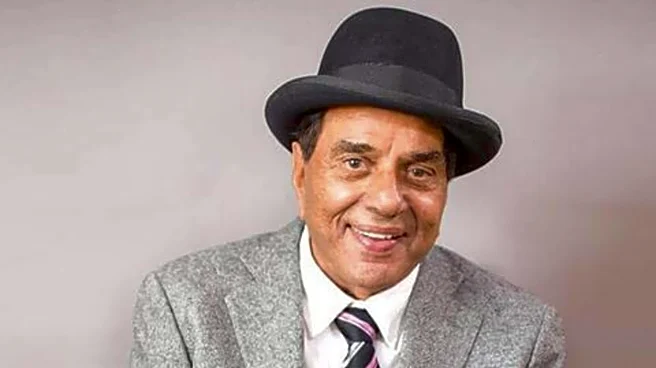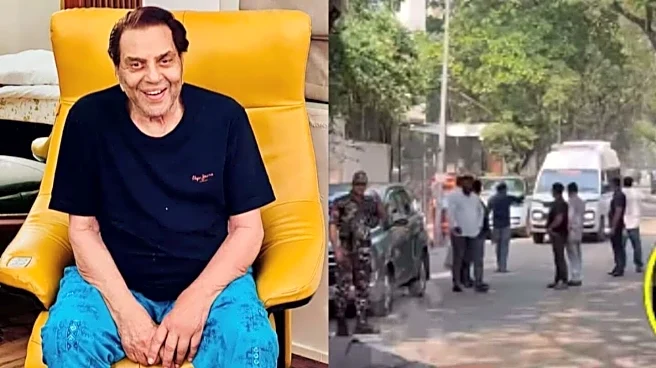
By Rachit GuptaLong before Dharmendra became the poster boy of rugged masculinity and velvet-soft romance, he was a young man from Punjab chasing a dream that seemed impossibly distant. Born Dharmendra Kewal Krishan Deol in 1935, he was a product of small-town innocence and big-screen reverence. Through his long and celebrated career Dharmendra often recounted how he grew up obsessively watching films at local theatres in Punjab. That quiet longing for cinema led him to respond to a national talent search that would change the course of his life: Filmfare magazine’s All-India Talent Contest, one of the most influential star-making platforms of its time.Filmfare’s talent hunts in the 1950s and 1960s were not casual competitions; they were cultural
events. At a time when the Hindi film industry was expanding rapidly, these contests became formidable gateways for discovering fresh faces who could define the next chapter of mainstream cinema. When Dharmendra won the contest in 1958, it wasn’t just a victory it was a validation of a dream, an anointing of potential. The honour brought him to Mumbai with the promise of a film that, ironically, never materialised. Yet the missed opportunity didn’t derail him. Instead, it plunged him straight into the heart of an industry where he would carve his own destiny.Dharmendra eventually made his debut in 1960 with Arjun Hingorani’s Dil Bhi Tera Hum Bhi Tere, a modest romantic drama that introduced audiences to an actor whose charm was more intuitive than manufactured. Through the early years, he worked steadily, gaining the kind of momentum that was less meteoric and more organic, the rise of a performer discovering himself as the industry discovered him.The 1960s were decisive. It was in this decade that Dharmendra’s stardom crystallised as filmmakers began recognising the rare duality he possessed: the beauty of a matinee idol with the soul of a character actor. In films like Bandini, Anpadh, Aaye Din Bahar Ke and later Phool Aur Patthar, which earned him his first Best Actor nomination at the 1967 Filmfare Awards. He crafted a screen presence built not just on magnetism, but on moral and emotional clarity. His performances were marked by a gentleness that softened his physical dominance and a sincerity that gave his characters moral weight.Dharmendra was, even in his romantic heyday, an actor of restraint. He approached emotions with a certain inwardness, understanding instinctively that vulnerability could be more powerful than theatrics. Nowhere is this more evident than in Satyakam, widely regarded as one of the finest performances in Indian cinema. As the idealistic and doomed Satyapriya, Dharmendra delivered a masterclass in internal acting, summoning wounded dignity, moral conflict, and tragic earnestness with remarkable stillness. It was the kind of work that revealed the depth behind the star: a performer capable of channelling integrity, turmoil, and heartbreak without ever raising his voice.His discovery through Filmfare’s talent hunt was, in many ways, symbolic. Dharmendra represented a new chapter of Hindi cinema one where naturalism met beauty, where masculinity coexisted with gentleness, and where stardom could be shaped as much by empathy as by glamour. He was able to forge a lasting on-screen partnership with established legends like Meena Kumari, Balraj Sahni and more. And then he was able to back the careers of phenomenal talents like Amitabh Bachchan, Govinda, Salman Khan, Ajay Devgn and others, extending the same courtesy he received with Filmfare's talent hunt. In that essence, what began as a contest entry became the foundation of one of Indian cinema’s most enduring legacies.
/images/ppid_a911dc6a-image-176398256750143527.webp)

/images/ppid_a911dc6a-image-176397577526849472.webp)
/images/ppid_a911dc6a-image-176397569624071615.webp)

/images/ppid_a911dc6a-image-176398266362234508.webp)
/images/ppid_a911dc6a-image-176397921422276036.webp)


/images/ppid_59c68470-image-176397754412053914.webp)

/images/ppid_a911dc6a-image-17639825962424783.webp)
/images/ppid_a911dc6a-image-176398252734696524.webp)
/images/ppid_a911dc6a-image-176397566574192341.webp)
/images/ppid_a911dc6a-image-176397926432687169.webp)
